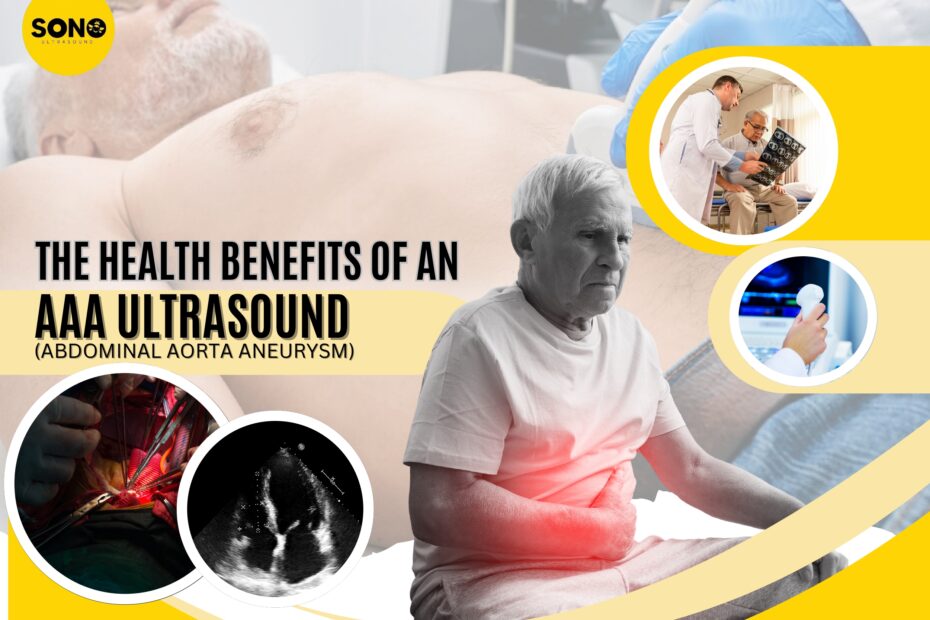The Health Benefits of an AAA Ultrasound
An AAA ultrasound is a simple, safe, and non-invasive test that checks for a condition called Abdominal Aortic Aneurysm (AAA). An AAA is a swelling or ballooning in the aorta, which is the main artery that carries blood from your heart to the rest of your body. The aorta runs through your abdomen, and if it becomes too large, it can rupture (burst), which is life-threatening. An AAA ultrasound helps detect these aneurysms early, allowing doctors to monitor or treat the condition before it becomes dangerous.
What is an AAA Ultrasound?
An AAA ultrasound uses sound waves to create images of your abdominal aorta. During the test, a small device called a transducer is placed on your abdomen and moved over the area to capture pictures of the aorta. These images show the size and shape of the aorta, helping doctors check for any swelling or abnormalities.
The procedure is painless, quick (usually taking about 15-30 minutes), and non-invasive, meaning it doesn’t involve surgery, needles, or radiation. Since it doesn’t use radiation, it’s a very safe option for people of all ages, especially those at higher risk for AAA.
Health Benefits of an AAA Ultrasound
There are several important health benefits to performing an AAA ultrasound, especially for preventing life-threatening complications:
- Early Detection of Aneurysms
The most significant benefit of an AAA ultrasound is that it can detect an aneurysm before it causes any symptoms. Many people with an AAA don’t know they have it until it becomes a serious emergency. By catching the aneurysm early, doctors can monitor its size and decide if treatment is needed, preventing dangerous situations like a rupture.
- Preventing Rupture
A ruptured aneurysm can cause severe internal bleeding, which is often fatal. If an ultrasound shows that the aneurysm is growing too large, doctors can recommend surgery or other treatments to repair the aorta before it bursts. This early action saves lives by preventing a potentially deadly emergency.
- Monitoring Aneurysm Growth
For people with small aneurysms that don’t need immediate surgery, the ultrasound can be used to monitor the aneurysm over time. Regular ultrasounds help doctors track whether the aneurysm is growing and decide when treatment might be necessary. This ongoing monitoring helps prevent complications while ensuring the patient receives the right care at the right time.
- Non-Invasive and Safe
Unlike other tests that might require surgery or the use of radiation, an AAA ultrasound is completely non-invasive and safe. There’s no recovery time, no discomfort, and no risk from radiation exposure. It’s a quick and easy way to check for a serious condition without putting patients at risk.
- Ideal for High-Risk Patients
Certain people are at higher risk for developing an AAA, such as men over 65, smokers, and those with a family history of aneurysms. An ultrasound is especially beneficial for these individuals, as it can detect aneurysms early and help doctors take action to prevent future complications.
When is an AAA Ultrasound Needed?
Doctors may recommend an AAA ultrasound if you:
- Are over 65, especially if you are male.
- Have a history of smoking.
- Have a family history of abdominal aortic aneurysms.
- Have high blood pressure, atherosclerosis (hardening of the arteries), or other heart-related issues.
Sonobee suggests an AAA ultrasound because it’s a valuable tool for detecting and monitoring abdominal aortic aneurysms. It is a safe, non-invasive, and painless test that can save lives by catching aneurysms early, preventing rupture, and guiding treatment decisions. If you are at risk for an AAA, getting Sonobee health ultrasound can provide peace of mind and ensure that you receive the care you need to stay healthy.
Disclaimer: This content is for informational purposes only and should not replace professional medical advice. Please consult a doctor for any concerns
